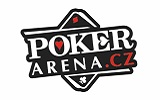Rozhovory
Lebkův limited – Interview s bývalým šampionem
O limited a sealed decku jsem již na tomto serveru pár článků publikoval. Bohužel všechny trpí tím, že byly sepsány jedním člověkem, který se navíc rozhodně nedá nazvat odborníkem. Z tohoto důvodu jsem se rozhodl oslovit nějakého vysoce nadprůměrného hráče, který dané tématice rozumí a jehož názory budou podpořeny úspěchem v praktické hře.
Oslovil jsem tedy Marlona Egolfa, známého především ze serveru draftmagic.com, pro který nahrává a zveřejňuje své drafty na MTGO[i] (pod nickem „merl2pearl“) Tato videa jsou nalezitelná i na Youtube.
Jelikož je nadšeným podporovatelem začátečníků a dotazy okolo hry ho neobtěžují, souhlasil s rozhovorem na téma limited. Díky němu tedy můžete nahlédnout pod pokličku skutečného mistra hry Magic: the Gathering. Upozorňuji jen, že na Marlonovu žádost je interview uvedeno v angličtině. V případě zájmu pište do komentářů, že chcete český překlad. Chápu, že mnozí začátečníci neumí anglicky natolik, aby pro ně následující rozhovor byl velkým přínosem:

How long have you been playing Magic and how long do you play on MTGO?
I originally started playing Magic around April of 1994. A friend of mine named Dan Purple brought a deck of his into school and showed it to me. The first card I remember was Plague Rats. I told him that I thought the game looked cool, and he gave me my very first card, an obscure Antiquities common called Priest of Yawgmoth. Within a few days I was hooked, and started spending all of my money on Magic boosters and starter decks.
I started playing MTGO in 2006, right after the online release of Guildpact. At the time I was only playing online sparingly, since I still played a good amount of paper Magic. Now, I only play paper Magic a couple times a year, and do almost all of my playing online.
Which formats and tournaments do you like the most?
I'm first and foremost a limited player. Limited formats have a puzzle quality about them that I love. Being able to draft and construct a powerful deck is much more enjoyable to me than metagaming for various tournaments and formats. I enjoy sealed deck as well as draft, although I draft far more often than I play in sealed events.
There are certain constructed formats that I enjoy, although it has to do more with the available decks than it does the actual format. For instance, I really enjoyed Shards/Zendicar standard, as Fauna Shaman Naya, Next Level Bant, and Jund were all tier 1 decks that I enjoyed playing. This standard season I haven't really found a good deck that I like to play, so I haven't been playing standard.
I will play any limited tournament, regardless of the format, but I will only play constructed if I actually have a deck I. This past year I've gone to several StarCityGames Open tournaments, but since I didn't have a standard deck that I liked, I only did side drafts.
What do you consider your greatest Magic achievement?
My greatest Magic achievement is definitely winning GP Boston in 2009. Not only was it in my hometown area, but I had done a lot of practicing and theorizing of that particular sealed format, and it was great to see my work rewarded.
So, you won Boston GP, which was sealed deck and then draft with Magic 2010. How did it go?
The key about winning in a core set is identifying the most common ways for you to lose, and figuring out how to fight them. You're often going to have to hold removal, countermagic, or some other reactive card so that you don't lose to your opponent's best threat. For instance, I heard plenty of players say that Fog is a terrible card, and yet those same players would complain about how they lost to Overrun. At GP Boston I was 8-1 in the sealed portion of the event, and I played G/U without any rares, mythics, Overruns, or Mind Controls. The key to my success at that particular tournament was knowing the threats in the format, and knowing how to win through them.
How did your "Boston Sealed deck" looked like? Do you remember deck list or at least some key cards?
I don't think that we need to focus on my particular sealed deck. All sealed pools are different, and it's better to focus on certain strategies than just one specific deck.

So what are the most important factors in sealed deck tournaments that determine whether you will succeed or not?
Success in any sealed tournament is about understanding the way that particular sealed format plays out. For example, how many colors can you realistically play in your deck? Should you rely on winning with bombs, or is your pool synergistic enough that you can win without them? How slow or how fast is the format?
The more wins you rack up in a sealed tourney, the better your opponent's decks are going to be. You are going to need to leverage your removal to deal with the most important threats in your opponent's deck. If your opponent turns out to have a significantly better deck than yours, you need to be able to play as tightly as possible and gain every little advantage that you possibly can. For example, if you know that your opponent has Into the Core, try not to play more than one artifact at once, even if it means taking some damage in the process. Little things like that will determine the difference between top 8 and finishing out of the money.
What is your personal method of building sealed deck? How do you proceed?
Sealed decks have a lot of cards to sort through, so what I like to do at first is just go through and removal all of the unplayables, which makes the pool a little easier to sort through. Then it's a matter of finding your bombs, and seeing if you can support them. After that, removal, synergy, etc.
What is your advice to sealed deck beginners? What should they do and what should they avoid?
Sealed beginners should focus on card quality. Newer players will often include cards that don't have any impact on the board, such as life gain. These things should be avoided. Also, be very, very careful with creature enchantments, since every deck you play against will have a multitude of ways of 2-for-1 exchanges, and giving yourself card disadvantage is the easiest way to lose.
Which edition or block did you like for sealed deck the most?
My favorite set of all time for limited play was Ravnica block. There were so many interactions, and so many different ways to build each deck due to the myriad of multicolored cards and mana fixing. Every deck felt like a complex puzzle to put together.
How would you describe SOM block on sealed deck? How do you like it and what are your experience about it? And how do you think things have changed when MBS and NPH were released?
Scars block sealed is a very bomb oriented format, but that can be said for most sealed formats. The difference with Scars is the non-artifact bombs are so much tougher to deal with than the artifact ones. A card like Steel Hellkite or Moltensteel Dragon, while very much capable of taking over a game, can be dealt with infinitely easier than something like a Carnifex Demon or Victory's Herald. Cards that dodge the multitude of Shatter effects in the format can cause a real problem for many decks. Mirrodin Besieged and New Phyrexia have more non-conditional removal spells than Scars did, but something like a Chancellor of the Dross can still be very difficult to deal with.
Scars is still a relatively complex sealed format, and I've had a lot of success with it, both online and in real life. There will always be insane bombs in any sealed format, but I think Wizards did a fine job of balancing the rest of the cards out.

How much time do you spend by playing magic?
I would say about 15 hours a week. This would be several drafts, and then contructed games of 100 cards singleton which I enjoy greatly. If I have some downtime, I will usually always chose Magic Online over watching television, so that is how I'm able to play so much.
How many drafts and how many sealed decks do you usually play with each edition?
I probably play around 5-10 sealed tournaments with a particular set by the time the next one comes out. I have no idea how many drafts I do of each set. 50? 100?
You are very successful in your drafts. Usually you make it at least to the finals. Where do you think you have the edge on your opponents. What makes you the better player?
I don't think it has as much to do with being the better player as it does drafting the right deck. Keep synergies in mind, make sure all of your cards do something, and try to have answers to the most prevalent threats in the format. After that, it's usually just a matter of playing as tightly as you can, and you should be able to get good results.
What do you expect from M12? How do you thing the limited will look like?
Core set limited is always pretty straight forward, and it looks like M12 is more of the same. In draft, it looks like some of the more popular strategies have been removed; The R/B Act of Treason deck loses both Bloodthrone Vampire and Viscera Seer, and the white aggro decks lost a major piece in Infantry Veteran. Although it does look like Bloodthirst is getting a lot of support, so that should be a viable strategy.
The big change in sealed is the return of Overrun, and the removal of Safe Passage. Overrun at uncommon means that any green deck that you face could easily have a way to kill you from a seemingly safe board position. The removal of Safe Passage means that White loses one of its more powerful common spells, which not only essentially counters Overrun, but also the other super uncommon Fireball. This makes white a much tougher sell in sealed, since whites aggressive strategies don't lend themselves well to the slower, more powerful sealed format.
Have you already played some sealed deck with M12? How did it go?
I played one sealed deck at the prerelease. My deck was fine, but I didn't have any ridiculous mythics or anything. I went 2-1, losing to a deck that had some ridiculous mythics. Thus is the nature of sealed deck.
How is drafting with M12 like?
I haven't done any draft yet. I hear it's pretty fast.
Did something surprised you? I mean: Were some cards unexpectebly better (or weaker) than you thougt they would be?
Goblin Fireslinger was surprisingly good. Being able to activate bloodthirst without attacking is pretty huge, not to mention a turn 1 Fireslinger can end up doing about 8-10 damage.
The most interesting interaction I saw was during one of the games I was watching. One of the players played Lure on his opponent's biggest creature, then he took it with Act of Treason, and attacked. It ended up being something like a 4-for-2, and was just a very cool play in general.

[i] MTGO – Magic: the Gathering Online
Komentáře
Přispívat mohou pouze přihlášení uživatelé. Pokud chcete vložit komentář, přihlaste se ZDE.




